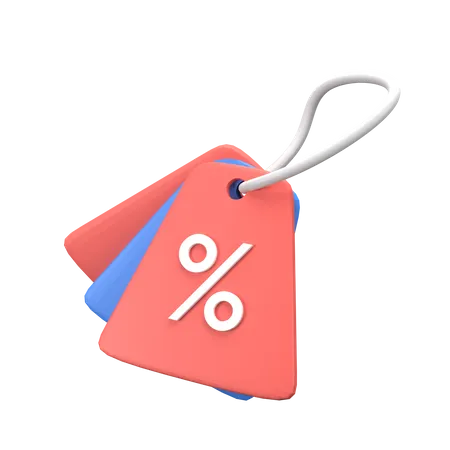Affiliate Marketing 101: How to Make Money from Your Blog
Blogging can be a great creative outlet, but did you know it can also be a powerful way to make money? One of the most popular and effective methods for bloggers to generate income is through affiliate marketing. In this article, we’ll dive into Affiliate Marketing 101, explaining what it is, how it works, and how you can use it to make money from your blog.
What is Affiliate Marketing?
At its core, affiliate marketing is a performance-based marketing strategy. You, the blogger (or affiliate), promote someone else’s product or service through special tracking links. When one of your readers clicks the link and makes a purchase, you earn a commission. It’s as simple as that! The beauty of affiliate marketing is that you don’t need to create or maintain any products—your job is to connect your audience with relevant products or services.
In this Affiliate Marketing 101 guide, you’ll learn the steps to successfully implement affiliate marketing on your blog and turn your content into a money-making machine.

How Does Affiliate Marketing Work?
Affiliate marketing involves three key players:
1. The Advertiser – This is the company or brand selling the product or service. They provide affiliates with unique links to promote their offerings.
2. The Affiliate – That’s you! As a blogger, you promote the advertiser’s product using an affiliate link on your blog.
3. The Consumer – These are your blog readers who click on your affiliate links and (hopefully) make a purchase.
When a reader clicks on your affiliate link, a cookie is placed in their browser to track their activity. If they purchase something within a set time frame, you’ll receive a commission.
Also read: How to Turn Your Blog into a Passive Income Stream
Steps to Start Affiliate Marketing on Your Blog
1. Pick a Niche
The first step to getting started with affiliate marketing 101 is choosing a niche for your blog. Your niche will guide the types of products you promote, so it’s important to pick something you’re passionate about and that aligns with your audience’s interests. A well-defined niche helps you build a loyal reader base, and readers are more likely to trust your recommendations.
For example, if your blog focuses on fitness, you could promote workout equipment, supplements, or fitness programs. If your niche is travel, you might promote luggage, travel gear, or booking platforms.
2. Join Affiliate Programs
Once you’ve chosen your niche, it’s time to find affiliate programs that offer products or services related to your blog’s topic. Here are some popular affiliate programs:
1. Amazon Associates: One of the largest and most diverse affiliate programs. You can promote almost any product on Amazon and earn commissions.
2. CJ Affiliate: Offers a wide range of brands and products across various categories.
3. ShareASale: Another large network with many affiliates offers in different niches.
4. ClickBank: Specializes in digital products, making it a great option for promoting eBooks, courses, and software.
Most affiliate programs are free to join. You’ll be provided with unique affiliate links that you can insert into your blog posts.
3. Create High-Quality Content
To make money through affiliate marketing, you need traffic to your blog. Creating high-quality, valuable content is the key to attracting visitors. Here are some content ideas that work well for affiliate marketing:
1. Product Reviews: Write in-depth reviews of products related to your niche. Be honest and transparent, as your readers will appreciate your genuine opinions.
2. How-to Guides: Create tutorials or guides that solve problems for your audience. For example, if you run a beauty blog, you could create a “How to Choose the Best Skincare Products” guide with affiliate links to your favorite products.
3. Listicles: “Top 10 Travel Gadgets You Need for Your Next Trip” is an example of a listicle where you can include affiliate links to each item.
Focus on providing real value in your content, as this will build trust with your audience and increase the likelihood that they’ll click your affiliate links.
4. Optimize Your Affiliate Links
Once you’ve added affiliate links to your blog, it’s important to make sure they’re optimized. Here are a few tips for optimizing affiliate links:
1. Place them naturally: Don’t force links into your content. Instead, find natural spots to include them where they make sense. For example, if you’re writing a blog post about home workout routines, you could include a link to a product you use for your workouts.
2. Disclose your affiliate relationships: Transparency is key to maintaining trust with your audience. Make sure to disclose that you may earn a commission if readers purchase through your links.
3. Test different placements: Try placing affiliate links in different parts of your content (e.g., in the middle of a post, at the end, or in a sidebar) to see what performs best.
5. Promote Your Content
Creating quality content is only part of the equation. You also need to promote your blog posts to drive traffic. Here are some effective ways to promote your content:
1. Social Media: Share your blog posts on platforms like Instagram, Twitter, Facebook, and Pinterest. Make sure to include enticing descriptions and images that encourage people to click through to your blog.
2. Email Marketing: Build an email list of subscribers and send them regular newsletters with links to your latest blog posts.
3. Search Engine Optimization (SEO): Optimize your blog posts for search engines to improve your chances of ranking higher on Google. Use relevant keywords, like Affiliate Marketing 101, naturally throughout your posts and optimize your meta descriptions.
6. Track and Improve Your Results
Once your affiliate marketing strategy is in motion, it’s important to track your results and make improvements. Most affiliate programs provide analytics that shows how many clicks, conversions, and commissions you’re earning.
Pay attention to which products or links are performing best, and adjust your content strategy accordingly. If certain products are selling well, create more content around them. If a specific type of post is driving more clicks, focus on creating similar posts.
Why Choose Affiliate Marketing?
There are several reasons why affiliate marketing is a great option for bloggers looking to monetize their content:
- Low Start-Up Cost: You don’t need to create your product or service, which saves you time and money.
- Passive Income Potential: Once your affiliate links are set up, they can generate income around the clock.
- Flexibility: You have the freedom to choose the products or services you want to promote, aligning them with your blog’s niche and audience.
Now that we’ve covered the basics, let’s dive deeper into how you can get started with affiliate marketing on your blog.
Common Affiliate Marketing Mistakes to Avoid
While affiliate marketing can be lucrative, there are some pitfalls to avoid:
1. Promoting Too Many Products: Stick to promoting products you genuinely believe in. Promoting too many items can dilute your blog’s credibility.
2. Not Knowing Your Audience: Focus on products that solve your audience’s problems or meet their needs. Irrelevant promotions can turn readers off.
3. Ignoring Legal Disclosures: Always disclose your affiliate relationships to comply with FTC guidelines. Failure to do so can lead to legal trouble and damage trust with your readers.
FAQ:
What is Affiliate Marketing?
Affiliate marketing is a way for bloggers and content creators to earn commissions by promoting products or services and driving sales through special tracking links.
How Do I Get Started with Affiliate Marketing?
To get started, pick a niche for your blog, join relevant affiliate programs, create high-quality content with affiliate links, and promote your content to attract traffic.
Do I Need a Lot of Traffic to Make Money with Affiliate Marketing?
While more traffic can lead to more conversions, you don’t necessarily need a huge audience to make money. The key is having a targeted audience that’s interested in the products you’re promoting.
How Much Can I Earn with Affiliate Marketing?
There’s no fixed income with affiliate marketing—it depends on the products you promote, your audience size, and how effectively you market those products. Some bloggers make a few hundred dollars a month, while others earn six-figure incomes.
How Do I Know What Affiliate Products to Promote?
Choose products that are relevant to your blog’s niche and that you believe will genuinely benefit your audience. Promoting products you’ve used or trust will also build credibility with your readers.
Conclusion
Affiliate marketing is a fantastic way for bloggers to turn their passion into profit. By following this Affiliate Marketing 101 guide, you can begin your journey toward earning a steady income from your blog. Remember to pick a niche, join affiliate programs, create valuable content, and promote it effectively to start seeing results.








